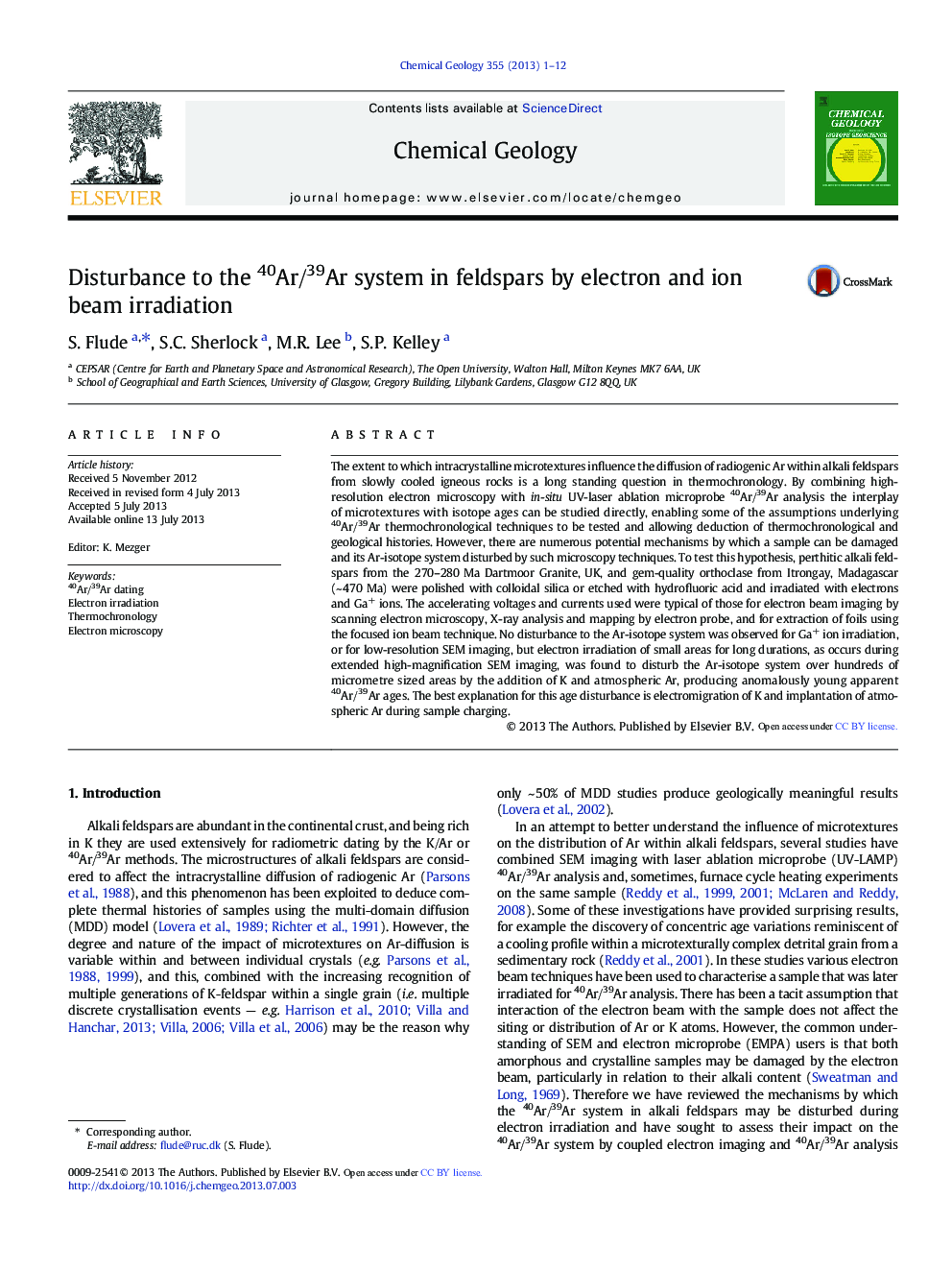| کد مقاله | کد نشریه | سال انتشار | مقاله انگلیسی | نسخه تمام متن |
|---|---|---|---|---|
| 6436786 | 1637614 | 2013 | 12 صفحه PDF | دانلود رایگان |

- Electron imaging techniques may affect the Ar-isotope system in feldspars.
- Electron beam damage disturbs the Ar/Ar isotope systematics over 100Â s of microns.
- Damage involves migration of K and implantation of atmospheric argon.
- Damage is due to the development of an electric field during sample charging.
The extent to which intracrystalline microtextures influence the diffusion of radiogenic Ar within alkali feldspars from slowly cooled igneous rocks is a long standing question in thermochronology. By combining high-resolution electron microscopy with in-situ UV-laser ablation microprobe 40Ar/39Ar analysis the interplay of microtextures with isotope ages can be studied directly, enabling some of the assumptions underlying 40Ar/39Ar thermochronological techniques to be tested and allowing deduction of thermochronological and geological histories. However, there are numerous potential mechanisms by which a sample can be damaged and its Ar-isotope system disturbed by such microscopy techniques. To test this hypothesis, perthitic alkali feldspars from the 270-280Â Ma Dartmoor Granite, UK, and gem-quality orthoclase from Itrongay, Madagascar (~Â 470Â Ma) were polished with colloidal silica or etched with hydrofluoric acid and irradiated with electrons and Ga+ ions. The accelerating voltages and currents used were typical of those for electron beam imaging by scanning electron microscopy, X-ray analysis and mapping by electron probe, and for extraction of foils using the focused ion beam technique. No disturbance to the Ar-isotope system was observed for Ga+ ion irradiation, or for low-resolution SEM imaging, but electron irradiation of small areas for long durations, as occurs during extended high-magnification SEM imaging, was found to disturb the Ar-isotope system over hundreds of micrometre sized areas by the addition of K and atmospheric Ar, producing anomalously young apparent 40Ar/39Ar ages. The best explanation for this age disturbance is electromigration of K and implantation of atmospheric Ar during sample charging.
Journal: Chemical Geology - Volume 355, 26 September 2013, Pages 1-12